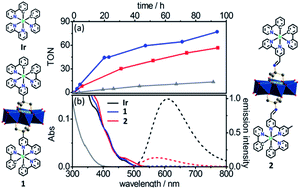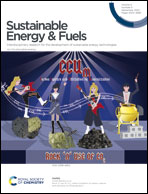Organic linkage controls the photophysical properties of covalent photosensitizer–polyoxometalate hydrogen evolution dyads†
Abstract
Understanding the complex photophysics of covalent photosensitizer–catalyst (PS–CAT) dyads is the basis for advanced structure and reactivity design. Here, we compare the light-induced processes of two PS–CAT hydrogen evolution dyads which differ in the chemical linkage between the Ir photosensitizer and the polyoxometalate catalyst. Variation of the linkage structure results in major changes of the photophysical properties and deactivation pathways which could be one of the factors controlling the catalytic activity.



 Please wait while we load your content...
Please wait while we load your content...